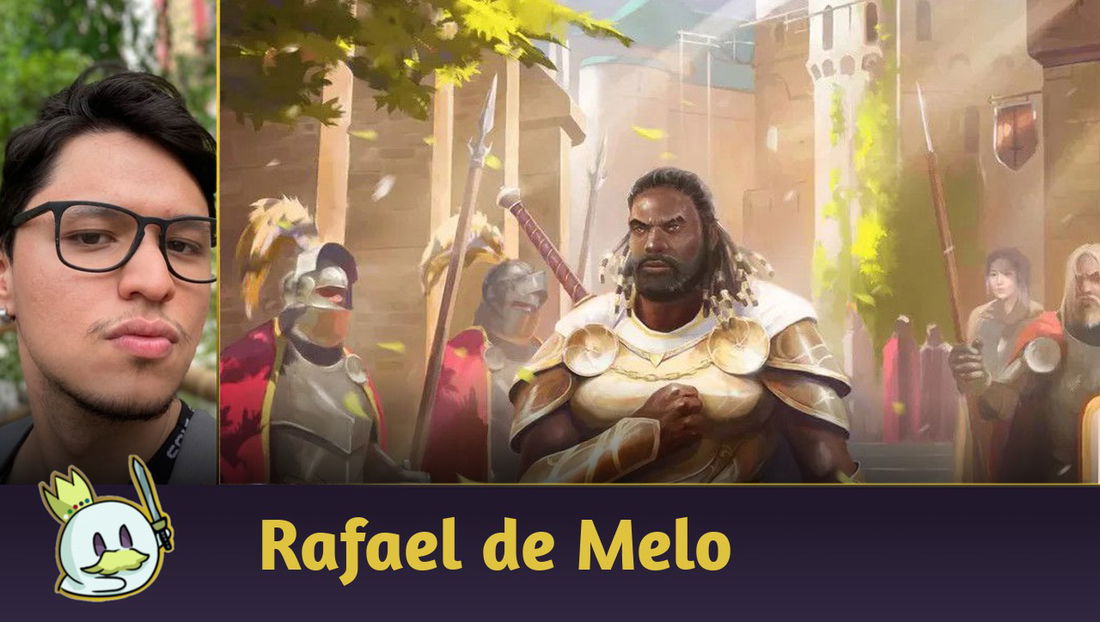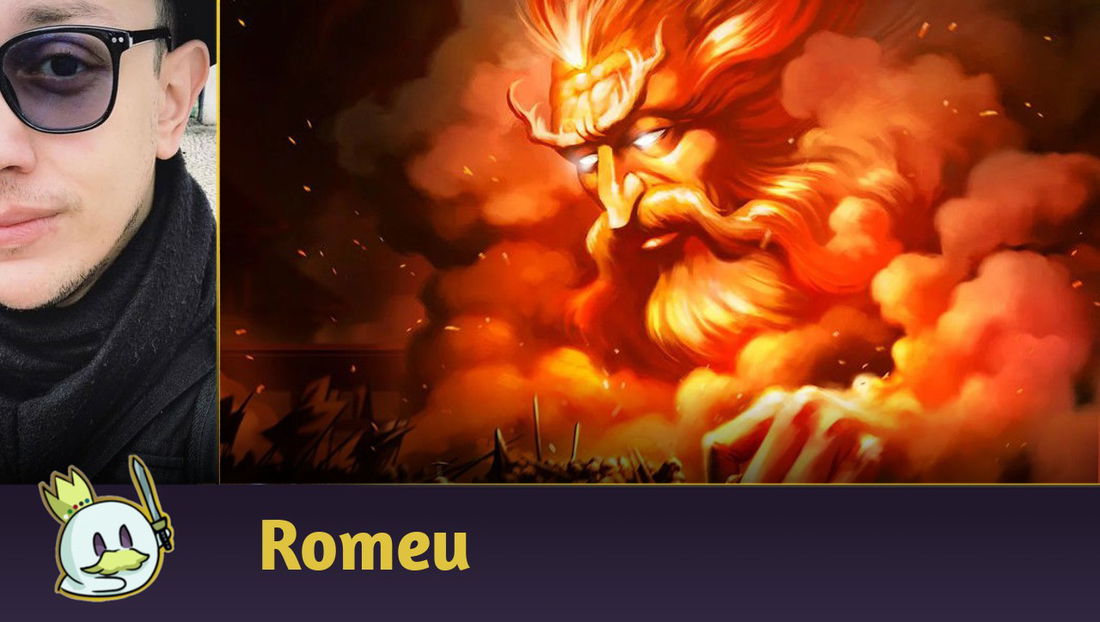Introduction
Today (September 4th, 2024), LSS once again updated the banned and restricted list, which will impact Blitz, Classic Constructed, and Living Legend. It was one of the most crucial updates in the history of the game.
From September 9th onward, the following cards are banned from Blitz and Classic Constructed:
- Bonds of Ancestry (1) (now in all colors);
- Cash In (2);
- Orihon of Mystic Tenets (3);
Ad
And the following card is restricted in Living Legend:
- Bonds of Ancestry (1) (this means a deck can include 1 copy of a card named Bonds of Ancestry).
Note: today, we won't discuss the heroes that reached Living Legend status in Blitz (Dash, Briar, and Zen). We'll write a separate review as soon as this Skirmish season ends.
Rethinking Flesh and Blood
In October, Flesh and Blood will be five years old. This mark is an excellent opportunity to look at the game as a whole and review its basic concepts and philosophy, as well as try to pave a solid path to celebrate another five years soon.
Flesh and Blood stood on four main pillars:
- You start the game strong and get weaker as it goes on;
- Less variance (as all hands are functional, whether you're attacking or defending);
- Every card counts (as you'll go through your entire deck) and;
- Players are rewarded for their good decisions, not good luck.
Two of these principles are still true: you do start the game strong and get weaker as it goes on, and every card does count. However, the other two concepts have been corrupted throughout the years and brought negative experiences into the game.
Indeed, Flesh and Blood has considerably less variance than other TCGs because of the pitch system, but there is still variance, one that should exist. The problem starts when players start losing control of their turns in certain situations - we'll go through them later on.
Moreover, luck has become increasingly more relevant to Flesh and Blood over time. Before, the game focused more on attrition, and there were two main ways to win: you had to either bring your opponent's life points down to zero or bring the number of cards in their deck down to zero. Today, however, bringing your opponent's life points down to zero is much more common, to the point that slower decks are have turned into aggressive decks. This led to negative experiences and made us feel like "there was nothing we could do to stop our opponents from winning".
In other words: a game of attrition became a game of "whoever draws better and attacks harder wins".
So, to update the game, the Flesh and Blood dev team decided to review these pillars and try to address these issues. The new pillars are now:
- Class, Talent, and Hero Identity: heroes are designed to embody the class they belong to, and preserve the identity and the mechanics the class includes;
- Empower Agency: players need to be able to make decisions throughout the match, and these decisions should lead them to victory.
- Every Card Counts : all cards in your deck should be important for your strategy, and;
- Paths to Victory: offer players attrition strategies that let them focus more on value, avoid very explosive turns, and make strategies centered around explosive turns (OTK) harder to execute, albeit possible.
To implement all of these deep changes, the team needed to update the game and remove cards that enabled these extremely aggressive turns. That's when the banned cards of today come in.
Ad
The Bans
Before we move on to the cards themselves, please note that they all have something in common: all of them give you a positive draw (that is, you'll end your play with more cards than you started) for a very low cost - in some cases, it's even free. And Art of War (2) is the best example of this.

Art of War (2) is a very iconic Flesh and Blood card. Throughout its entire existence, many aggressive heroes used it to end the game. In a vacuum, banishing an Attack Action to draw a card, besides spending one resource, might seem fair, but the heroes that used it the most gained more advantages than lost in this process. Banishing a card wasn't exactly a fair cost for them.

Chane, Bound by Shadow already wanted a card in the banished zone to play it in that same turn. Levia, Shadowborn Abomination followed this same logic. But the most extreme example was Zen, Tamer of Purpose. He'd both banish Crouching Tiger, which he created with his ability or with his leg equipment, and play this instant "for free" thanks to its chest equipment. In other words, for this ninja this card was "zero cost, draw two cards, and your attacks have +1 until the end of the turn".
This same logic applies to Tome of Fyendal (2). As this is an Action without go again, your turn would end right after you played it, but heroes that used it went over this issue. Kano, Dracai of Aether played it as an instant thanks to his ability, and Dash I/O "cheated out" Action Points with the crank ability and High Octane (1) turns.
All other cards in this list had this exact same issue. Cash In (2) can become problematic as the game grows on and more Gold cards become relevant, as well as Tome of Firebrand (1), as we get more draconic cards. Tome of Aetherwind (1) was an instant in Kano's hands, and so on and so forth.
However, notice that this list has not banned all card draw in the game. We still have Bloodrush Bellow (2), Three of a Kind (1), Tome of Harvests (3), and others.
Why then did these remain in the game, and how do they fit into the new philosophy?
These other cards are way more restrictive and demand a more specific deckbuilding to work fully. Bloodrush Bellow (2) is limited to Brute and demands you discard a random card in particular, and Tome of Harvests (3) requires a card in your arsenal. Tome of Imperial Flame (1) requires you to be a Royal and pitch red cards, and so on and so forth.
To sum up, each banned card let the player set up absurd turns at a very low cost or even no cost at all. This went against the new philosophy the Flesh and Blood team wants for the game: Flesh and Blood should focus more on attrition.
Living Legend Updates
Even though the Living Legend format is the place for the most absurd strategies FaB has to offer, Zen, Tamer of Purpose was way above the line. With Stubby Hammerers, Art of War (2), Ancestral Harmony (3), and the consistency of the Descendent Gustwave (1) / Bonds of Ancestry (1) combo line, any deck that lacked disruption would be doomed to lose the game at any point.
Ad
Even Chane, Bound by Shadow couldn't compete with Zen. As a result, they decided to restrict Bonds of Ancestry (1). Please note that you'll still be able to set up absurd combos with this hero, but not as consistently as before.
The Winds of Change
It will be difficult to predict what the meta will look like after such heavy bans and with the Rosetta release just around the corner, but we'll try to imagine how the game will develop from now on.
Zen and the Ninja Class

Zen's issue isn't new. Even though the last banned and restricted list tried to reign him in, it was useless, as he continued to set up just as many absurd turns as before. We urgently needed a change, considering this hero was dominating all the formats in the game.
Without Art of War (2) and Bonds of Ancestry (1), his strategy will lean towards Crouching Tiger. It will be an aggressive deck, but way less explosive and more manageable. Nonetheless, it will remain strong, just not as abusive damage-wise.
Unfortunately, these bans completely destroyed the other two ninjas, who were already weak, particularly Katsu, the Wanderer. Katsu is now practically back to where he was before Outsiders and can no longer play its Dishonor (3) line. We'll have to wait and see whether he'll get more support to rebuild this class from the ground up.
Slower Decks Returning

Even though the current state of the game seems to be leaning more towards these explosive turns, not every hero plays this way. Dorinthea Ironsong, Kassai of the Golden Sand, Maxx ‘The Hype’ Nitro, and many others may once again see competitive play really soon.
With Rosetta just around the corner and new heroes that will throw slower game plans under the spotlight, we can expect a slower meta, more geared towards attrition, just like Heavy Hitters.
Final Words
A heavy banned and restricted announcement like this most definitely splits players' opinions, but, despite that, it is for the greater good: to update the game and make it last a long time. It was clear we needed a change, and the metagame was not at all healthy - in any format.
A new game is approaching and, with Rosetta, we'll see a positive change in Classic Constructed. Maybe, who knows, it will be a better game for everyone.
Please note that we'll review the Blitz changes in our next article after this Skirmish season ends, as well as the heroes who have reached Living Legend status.
What did you think of these decisions? Tell us your thoughts in our comment section below!
Thank you for reading, and see you next time!









— Comentarios0
Se el primero en comentar